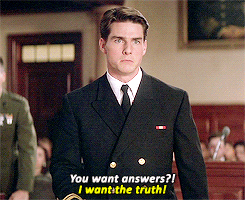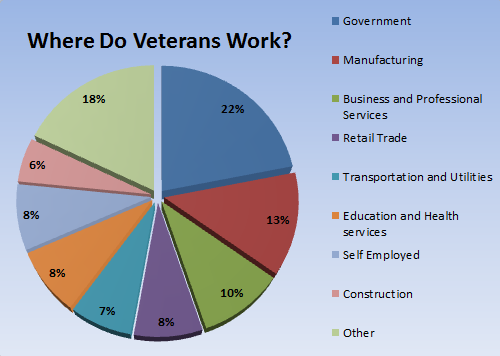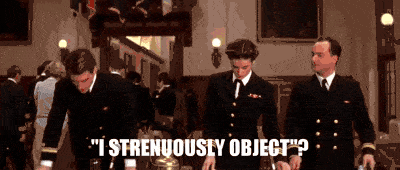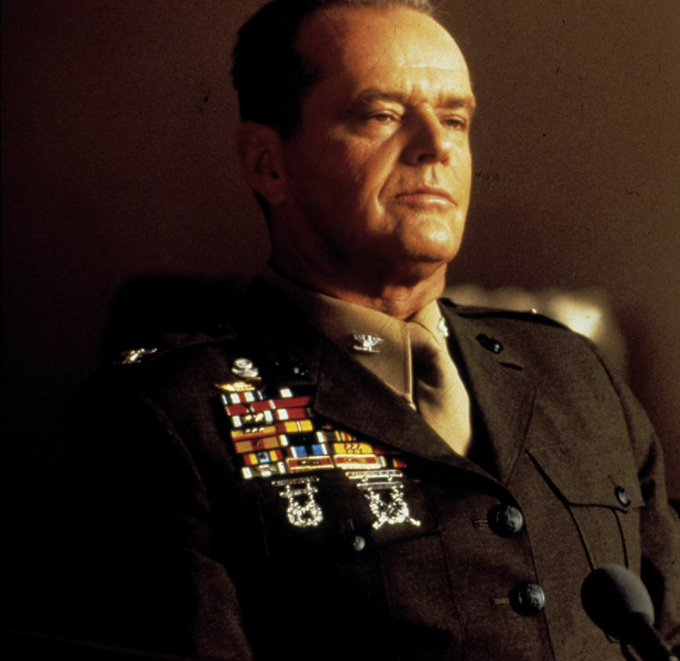 Imagine that some hiring manager wants to open a req right away for some random role, let’s say, a building maintenance technician.
Imagine that some hiring manager wants to open a req right away for some random role, let’s say, a building maintenance technician.
So he calls the recruiter with his request, and the two talk through the position requirements and what kind of candidate the hiring manager wants for this role. You with me?
So, the hiring manager replies to the recruiter:
“Well, I want to hire a veteran in this role. They’ll show up on time, they’ll take care of business and they’ll respect the chain of command. So, let’s get this done.”
The recruiter responds, as recruiters do, with a complex answer to this simple and straightforward hiring manager request:
“Sure thing,” the recruiter says.
“Let me get out my little Veteran Hiring Guide, and then I’m going to train you on the 10 reasons every employer should hire veterans. After that, we’re going to need to spend about 5 weeks reviewing training on resume translations, and how to manage veteran hires. Oh, and I’ll also need you to get certified specifically on how to interview a veteran. Then, we should be good to go!”
Ever wonder why no matter what, we don’t seem to be moving the needle on veteran recruiting? See above.
Catch 22: The Sad State of Veteran Recruiting.
 It’s one thing to wave the flag in theory, but in reality, veteran recruiting takes more than empty words and good intentions.
It’s one thing to wave the flag in theory, but in reality, veteran recruiting takes more than empty words and good intentions.
Unfortunately, it’s work that too few recruiters seem to be willing to put in, which does a disservice to those who served us, to be honest with you. Of course, it’s not their fault that veteran recruiting is, in fact, a pretty big pain in the *ss.
Inevitably – at this point, I pretty much just do it for “fun” – when I post a job description and append any copy associated with my preference to give transitioning military people the opportunity so many need, my inbox is absolutely flooded. Not with veteran job seekers, mind you.
Nope.
Instead, it’s brimming with messages from a cottage industry of consultants and “career experts,” all offering to help me with veteran skills translation, the opportunity to have someone come on site and train my team about why veteran hiring is important, and offers from even more consultants who want to tell me how to retain my veteran hires (mind you, I haven’t even hired them yet).
Still more are notes from people telling me that because I’m not an officially certified veteran recruiter – with the credentials from whatever racket they’re running to prove it.
Veteran hiring is a big business, and the profiteers out there would have you believe that attempting to hire veterans without “training” or certification is somehow an insult to the entire military community.
They’ll gladly wave the flag, except when it comes to putting that patriotism before profit. I’ll let you guess their preference.
What Employers Get Wrong About Veteran Recruiting.

As an industry, we’re on autopilot when it comes to recruiting and retaining “veterans.” Thought leadership on the subject has digressed to baffling cliches and tired aphorisms, and like lemmings, we regurgitate the same well worn lines every time we talk about how important veteran hiring is in the world of recruiting.
This reaction is instantaneous. It’s Pavlovian.
To be honest, our fixation and focus on veteran hiring has actually digressed to paying off what are at best diminishing returns, and at worst, a loss of great candidates due to misinformed or misguided veteran hiring related policies and programs.

It’s slowed down progress in veteran hiring to a crawl, and actually handicaps recruiters in their efforts more than it helps veterans find jobs by focusing on the wrong stuff, honestly. I get it. If you didn’t know any better, you might be tempted to buy whatever those consultants cramming my inbox are selling and spend the time to get training and certification you don’t need to get candidates you can already hire. It’s asinine.
If you’re a recruiter and weren’t in the military at some point in your life, you probably stay away from veteran recruiting, as a rule; it’s scary for civilians to jump into this space looking for talent, networking with transitioning military people or figuring out how to relate to all these “veterans” without looking like a total fraud.
I get it – you’re afraid if you don’t know when the Marine Corps celebrates its birthday, people are going to think you’re a closet Commie or something, right? If you really believe that, then you’re guilty of exactly the same type of bias that creates so many problems so endemic to our industry.
There’s no such thing as a “typical” veteran, which is something we get about pretty much every other protected class (except maybe “Millennials).
Dishonorable Discharge: Veteran Diversity and Exclusion.
 It’s kind of crazy, when you think about it – our misperceptions of veterans are exactly what’s inhibiting many employers from actually engaging with and converting candidates with military experience.
It’s kind of crazy, when you think about it – our misperceptions of veterans are exactly what’s inhibiting many employers from actually engaging with and converting candidates with military experience.
We spend tens of millions a year on veteran recruiting, but we don’t spend nearly enough time educating each other on the myths and misperceptions that plague former military hires.
We’re recruiters, so it’s imperative that we can understand a candidate’s pain points, show empathy for their aspirations and an appreciation for their experience and expertise.
That’s why we’re so rigorous in screening for soft skills, working to find the right fits for our organization capable of performing at the level our Company expects while also determining how well they match that amorphous and ambiguous concept of “culture,” data be damned.
We source, screen, slate and select candidates all day long, and we do so for every person from any other company out there (or even those who are currently “between employers”) who have a high enough threshold for pain that they’re willing to go through the gauntlet that is your online application process.
Everyone, that is, except for veterans.

It’s funny. As badly as we say we want more veteran applicants, the moment we find out a veteran applies, for some reason, we stop. Why? Well…because, you know, they need to translate their skills. Even if those skills don’t really need translation. It’s just that, if there’s military experience anywhere on their resume, they’re immediately labeled a “veteran” and treated with some sort of entrenched employment double standard.
When we see a veteran has applied for our job, we stop. We stop because…well, the hiring manager never explicitly told me whether or not they’d consider a veteran.
We stop because…well, our company doesn’t have a formal veteran recruiting program or any veteran retention or development initiatives in place. We stop because…it’s an excuse.
Oh, by the way: I hear a lot about veterans being a flight risk, but there’s no data to support that veterans are any less likely to leave than their non-veteran peers, since, you know, HR makes data driven decisions all the time and all.
Yeah. If we analyzed any of this, we’d see that we put up imaginary obstacles and excuses, rolling out red tape instead of the red carpet for former military candidates because we’re so preconditioned to respond to them as “veterans” instead of, you know, qualified candidates.

Those perfunctory 6 seconds we normally spend scanning a resume are forgotten, and that there’s no translation needed in a resume tailored explicitly for the job becomes extraneous to the fact that veteran applicants require some sort of specialized knowledge or skill to consider for positions, some sort of program to successfully recruit or retain them.
The fact is, if we overlooked their veteran status for a second, we’d see resumes that are probably far more professional than their civilian counterparts, considering the countless organizations out there – literally tens and thousands of them – whose only purpose is to help transitioning service members move from the military to the workforce as smoothly and successfully as possible.
These organizations work with veterans one on one to teach them interviewing skills, how to navigate the hiring process, professional presentation skills and the fine art of crafting a resume that’s going to not only get read, but get their foot in the door as a competitive candidate for your company.
They provide on-the-job training, assist with information and give advice, and ensure that veterans are ready before they ever hit “apply” – but even when those perfectly groomed candidates land at your feet for whatever job opportunity you’re advertising, we stop.
And we tell them to go back, to do it all over again, to “translate,” to do it our way, even if they already are. You know, just because.
Can You Handle The Truth About Veteran Talent?
 Look. The fact is, “veterans” are a pretty huge and diverse population.
Look. The fact is, “veterans” are a pretty huge and diverse population.
“Veteran” isn’t a functional skill, nor is it measurable in the sense that one can be more skilled at being a veteran than someone else who happened to have served.
You either are, or you aren’t. It’s a diversity label that needs to be filtered in order to actually find what we’re looking for – because most of the time, we’re sourcing and recruiting candidates based exclusively on functional need, not diversity status or by their protected class.
Which is why even top veteran talent often gets overlooked during most proactive sourcing and pipelining efforts.
Instead, veterans are consigned to some formal program or encouraged to take part in an initiative or join a “talent community” that for some reason exists only for them, treating them as some sort of special, separate class of job seekers that must be treated differently.
We do this largely with good intent, but let’s face it, the fact that we so explicitly talk about “veteran recruiting” programs and policies is inherently discriminatory. If we’re honest, if we were caught doing this solely based on skin color, religion, race or any other protected class, we’re not passing go on our way straight to HR Jail (or a compliance audit).
But for veterans, for some reason, it’s considered OK to take a one-size fits all, prejudiced approach to recruiting and hiring. Of course, if that approach worked, we probably wouldn’t still suck at attracting and retaining veteran talent.
Part 1 of a 2 part series.
About the Author:
 Dan Piontkowski is a fun loving guy that has spent too long in the recruiting and sourcing world waiting to figure out what to be when he grows up.
Dan Piontkowski is a fun loving guy that has spent too long in the recruiting and sourcing world waiting to figure out what to be when he grows up.
He’s done time enlisted in the Marine Corps, a graduate of the Naval Academy, a commissioned naval officer, developed robust veteran hiring initiatives at big companies and still doesn’t know what a Space & Missile officer in the Air Force does.
He likes Sugar Free Monster because it’s healthier than the regular stuff.
Dan isn’t on Twitter, but you can connect with him on LinkedIn.



 When it comes to succeeding in business today, you’ve got to make bold, decisive moves about technology adoption. Indecisiveness often means falling behind – and in today’s world of work, that’s something no business can afford.
When it comes to succeeding in business today, you’ve got to make bold, decisive moves about technology adoption. Indecisiveness often means falling behind – and in today’s world of work, that’s something no business can afford. Technology is only as effective as the people using it. And how well those people are actually using technology, of course, is shaped by whether or not they’re actually using it or not. A big part of end user adoption is driven by a single, simple question: “Will this make my job easier?”
Technology is only as effective as the people using it. And how well those people are actually using technology, of course, is shaped by whether or not they’re actually using it or not. A big part of end user adoption is driven by a single, simple question: “Will this make my job easier?”


 There’s an old saying that the only real thing you can ever count on is change.
There’s an old saying that the only real thing you can ever count on is change. Knowing that the past is prologue, it’s important to look at the historical precedent that’s been well established throughout the course of human history to best understand and chart the future trajectory of human resources.
Knowing that the past is prologue, it’s important to look at the historical precedent that’s been well established throughout the course of human history to best understand and chart the future trajectory of human resources.

 Jeff Mills is currently Director, Solution Management, Talent Acquisition for SAP SuccessFactors.
Jeff Mills is currently Director, Solution Management, Talent Acquisition for SAP SuccessFactors.

 About the Author: Dean Da Costa is a highly experienced and decorated recruiter, sourcer and manager with deep skills and experience in HR, project management, training & process improvement.Dean is best known for his work in the highly specialized secured clearance and mobile arenas, where he has been a top performing recruiter and sourcer.
About the Author: Dean Da Costa is a highly experienced and decorated recruiter, sourcer and manager with deep skills and experience in HR, project management, training & process improvement.Dean is best known for his work in the highly specialized secured clearance and mobile arenas, where he has been a top performing recruiter and sourcer. 











 If you’ve ever spent any time as a recruiter, you know that there’s nothing more painful than having to sit through a terrible job interview.
If you’ve ever spent any time as a recruiter, you know that there’s nothing more painful than having to sit through a terrible job interview.

 Interview tip:
Interview tip: 
 Interview tip:
Interview tip: 

 Interview tip:
Interview tip: 
 I read a
I read a  I know conference preview posts are generally pretty pithy, but the thing is, I really hope you can join me in San Francisco on April 10-12 if for nothing else than to watch the awkwardness ensue after I undermine most of the other sessions on the agenda by following their “thought leadership” with a little critical thinking.
I know conference preview posts are generally pretty pithy, but the thing is, I really hope you can join me in San Francisco on April 10-12 if for nothing else than to watch the awkwardness ensue after I undermine most of the other sessions on the agenda by following their “thought leadership” with a little critical thinking.

 All recruiting is social – even the most vigilant gatekeepers eventually have to talk to a candidate at some point during the hiring process. But social networks aren’t actually a recruiting strategy – they’re a platform which should augment, not replace, old school, albeit decidedly unsexy, efforts like posting jobs, cold calling and networking with your actual network, online or otherwise.
All recruiting is social – even the most vigilant gatekeepers eventually have to talk to a candidate at some point during the hiring process. But social networks aren’t actually a recruiting strategy – they’re a platform which should augment, not replace, old school, albeit decidedly unsexy, efforts like posting jobs, cold calling and networking with your actual network, online or otherwise.

 Employer branding, like mobile, is really important, but, to quote my friend Bill Boorman, almost all of it today is designed with the goal of “employer blanding” – making your company as generic as possible.
Employer branding, like mobile, is really important, but, to quote my friend Bill Boorman, almost all of it today is designed with the goal of “employer blanding” – making your company as generic as possible.

 After identifying a candidate, it is time to find an email search. In general, candidates don’t make their contact info easy to find. The further down the proverbial “rabbit hole” someone’s email is, the more effort it takes to find.
After identifying a candidate, it is time to find an email search. In general, candidates don’t make their contact info easy to find. The further down the proverbial “rabbit hole” someone’s email is, the more effort it takes to find.
 About the Author: Dean Da Costa is a highly experienced and decorated recruiter, sourcer, and manager with deep skills and experience in HR, project management, training & process improvement. Dean’s keen insight and creation of innovative tools and processes for enhancing and changing staffing has established Dean as one of the top authorities in sourcing and recruiting.
About the Author: Dean Da Costa is a highly experienced and decorated recruiter, sourcer, and manager with deep skills and experience in HR, project management, training & process improvement. Dean’s keen insight and creation of innovative tools and processes for enhancing and changing staffing has established Dean as one of the top authorities in sourcing and recruiting. 
 It happens to all of us. That moment in our lives where we stop looking for inspiration for a moment, take a step back and realize that inspiration, in fact, comes to us.
It happens to all of us. That moment in our lives where we stop looking for inspiration for a moment, take a step back and realize that inspiration, in fact, comes to us.

 Recently, I was researching
Recently, I was researching 
 Okay, without further ado, here’s the RecruitingDaily list of Women in HR Technology you should know and follow (listed in
Okay, without further ado, here’s the RecruitingDaily list of Women in HR Technology you should know and follow (listed in  William Tincup is the President of RecruitingDaily. At the intersection of HR and technology, he’s a Writer, Speaker, Advisor, Consultant, Investor, Storyteller & Teacher. He’s been writing about HR related issues for over a decade. William serves on the Board of Advisors / Board of Directors for 15 HR technology startups.
William Tincup is the President of RecruitingDaily. At the intersection of HR and technology, he’s a Writer, Speaker, Advisor, Consultant, Investor, Storyteller & Teacher. He’s been writing about HR related issues for over a decade. William serves on the Board of Advisors / Board of Directors for 15 HR technology startups.
 Change the Game
Change the Game Homerun
Homerun About Our Author: Mark Fogel is a Disruptor in the HR space and known for his HR with an Attitude. With 15 years heading HR at 3 prominent organizations and a slew of National Awards, including the SHRM Human Capital Leader of The Year, he has made a major impact on the Human Capital function. He is also the co-founder of Human Capital 3.0, an HR boutique with some very big clients. Often quoted in national media, Mark is an HR Thought Leader with a unique point of view. He can be reached at
About Our Author: Mark Fogel is a Disruptor in the HR space and known for his HR with an Attitude. With 15 years heading HR at 3 prominent organizations and a slew of National Awards, including the SHRM Human Capital Leader of The Year, he has made a major impact on the Human Capital function. He is also the co-founder of Human Capital 3.0, an HR boutique with some very big clients. Often quoted in national media, Mark is an HR Thought Leader with a unique point of view. He can be reached at 
 I remember it like it was yesterday. It was Christmastime early in my recruiting career. The company was doing well, and we were achieving unprecedented success. So much so, that it was determined that we were going to need to hire about 300 more people in the next few months. To help with that, we needed to hire about five more recruiters. We interviewed what seemed like hundreds of potential candidates. It was exciting when we narrowed it down to the top ten candidates. Next of course, narrowed that number down and hired what we thought were the top five candidates.
I remember it like it was yesterday. It was Christmastime early in my recruiting career. The company was doing well, and we were achieving unprecedented success. So much so, that it was determined that we were going to need to hire about 300 more people in the next few months. To help with that, we needed to hire about five more recruiters. We interviewed what seemed like hundreds of potential candidates. It was exciting when we narrowed it down to the top ten candidates. Next of course, narrowed that number down and hired what we thought were the top five candidates. #Same
#Same
 If you’re like most employers today, there’s a good chance that you’re spending a lot of money establishing your company’s recruitment marketing initiatives.
If you’re like most employers today, there’s a good chance that you’re spending a lot of money establishing your company’s recruitment marketing initiatives. Unfortunately, as companies invest in delivering the right talent for the right role at the right time, many employers are neglecting to consider that getting great candidates to hiring managers is only a small part of the hiring process.
Unfortunately, as companies invest in delivering the right talent for the right role at the right time, many employers are neglecting to consider that getting great candidates to hiring managers is only a small part of the hiring process. Employers spend a ton of time and money on making first impressions count with candidates through recruitment marketing and employer branding, but few focus on what that candidate will experience once they accept an offer and become an actual employee.
Employers spend a ton of time and money on making first impressions count with candidates through recruitment marketing and employer branding, but few focus on what that candidate will experience once they accept an offer and become an actual employee. Let’s face it: job descriptions kind of suck.
Let’s face it: job descriptions kind of suck.
 When hiring managers overlook job descriptions, recruiters almost always play it safe, choosing cookie cutter candidates with similar skill sets and experience; this process is defensive and tactical, rather than strategic and opportunistic.
When hiring managers overlook job descriptions, recruiters almost always play it safe, choosing cookie cutter candidates with similar skill sets and experience; this process is defensive and tactical, rather than strategic and opportunistic.
 James Ellis is currently Managing Consultant at
James Ellis is currently Managing Consultant at 
 While it’s only just now March, for Uber, 2017 is already shaping up to be a horrible, no good, very bad year – something of an annus horribilis for a company that not all that long ago was seen as a seemingly unstoppable burgeoning tech behemoth.
While it’s only just now March, for Uber, 2017 is already shaping up to be a horrible, no good, very bad year – something of an annus horribilis for a company that not all that long ago was seen as a seemingly unstoppable burgeoning tech behemoth. Sure, there was some bad press about what drivers actually got paid, or about how user information was being collected and utilized. But for the most part, Uber appeared to be coasting to a record IPO and inevitably, world domination (at least outside China and France).
Sure, there was some bad press about what drivers actually got paid, or about how user information was being collected and utilized. But for the most part, Uber appeared to be coasting to a record IPO and inevitably, world domination (at least outside China and France). A little backstory. In January 2016, Uber
A little backstory. In January 2016, Uber  1. Start With A Simple Search.
1. Start With A Simple Search.

 Ask any recruiter, and they’ll tell you what everyone already knows: when candidates provide their own list of references, those references are almost universally past colleagues and connections who will provide positive feedback and platitudes about the candidate in question.
Ask any recruiter, and they’ll tell you what everyone already knows: when candidates provide their own list of references, those references are almost universally past colleagues and connections who will provide positive feedback and platitudes about the candidate in question. Kate Bischoff advises organizations in a wide range of industries on employment law and human resources issues, from recruitment and workplace culture to terminations. Kate is passionate about improving company culture and using technology (social media and data analytics) in the workplace. Kate speaks from experience when advising clients when administrative and court matters commence.
Kate Bischoff advises organizations in a wide range of industries on employment law and human resources issues, from recruitment and workplace culture to terminations. Kate is passionate about improving company culture and using technology (social media and data analytics) in the workplace. Kate speaks from experience when advising clients when administrative and court matters commence.

 NASA
NASA


